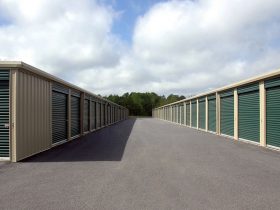Underground sprinkler system installations are a terrific way to save money on your water bill as well as time and manual labor. Automated lawn irrigation systems are also ideal caretakers for residential landscaping, especially grass, shrubs, perennials, and of course, trees.
Keep in mind that a sprinkler system installation is not the most straight forward do-it-yourself project out there, which is why homeowners should consider contacting local irrigation companies for their expertise and efficiency. However, if hiring a pro just isn’t in your budget, the following guidelines and tips will help you accomplish a successful installation.
Preparation
Before installation begins you need to acquire some data from your residence. First and foremost, you must determine your water pressure and water flow. Both will influence how you design the system.
Determining your water pressure is relatively straightforward if you utilize a water pressure gauge. If you don’t already have the proper tool arsenal, you should be able to pick one up at the local hardware store. The purchase will roughly set you back by $10.
Screw the gauge onto an outside spigot, and after ensuring that all other faucets (both inside and outside) are off, slowly turn on the tap. The gauge will provide a reading in PSI. Average water pressure for residential homes is between 40-70 PSI; if the readings are on the low side, contemplate contacting a sprinkler company for advice.
Next, determine the water flow rate by filling a 5-gallon bucket with water using an outdoor faucet and timing how long it takes to fill. Record your data and repeat the steps for accuracy. This simple method and calculation below will give you a close approximation of how many gallons per minute you’re getting.
A 5-gallon bucket takes ~30 seconds to fill.
5 ÷ 30 = .17
Now convert to minutes.
.17 x 60 = 10.2 GPM (Gallons per minute)
Once you know that your house has adequate water pressure and gallons per minute, it’s time to proceed to the planning stage of the sprinkler system installation.
Plan
Sprinkler heads are measured in gallons per minute, while drip zones are measured in gallons per hour. Your water pressure and flow rate, in addition to obstacles in the yard, will help shape your sprinkler system design, e.g., the number of zones required to achieve maximum spray and water coverage.
If you only need to irrigate a small lawn in your front yard, then you may get away with a single zone. However, if you plan to install sod in the front and backyard as well as a few trees and shrubs, then you’re going to need a sprinkler zone for each section.
You will also need to map your sprinkler heads to ensure 100% coverage to avoid dry spots in your lawn. Uniformity of coverage is achieved by distancing the heads in a way so that there is equilateral overlap with their spray. Draw your sprinkler design out on paper and invest in a Rolatape to accurately measure your yard. This will help you visualize the project and pinpoint any potential problems.
After you’ve double-checked your measurements and head placement, walk the property and place flags where the sprinkler heads will go. If the math checks out and you’re satisfied, it’s time to purchase the necessary products for your sprinkler system installation.
Primary Sprinkler Parts
If a plumber has already installed an outdoor backflow preventer and copper piping that will feed into your sprinkler valves, then you may proceed to the next step by purchasing the following sprinkler parts:
- 1-inch poly pipe: More flexible than PVC pipe and is less likely to be damaged by freezing temperatures. This is critical if you live in a region with a colder climate like Colorado.
- Swing Pipe: Thinner pipe used to improve water pressure and connect heads to the poly pipe.
- Valves: Regulate each sprinkler zone. We recommend slow closing and opening valves to help reduce wear and tear.
- Valve Box: Provides easy access while at the same time protection.
- Sprinkler Heads & Nozzles: The most popular brands are Rain Bird and Hunter, but Weathermatic is a wise choice as well.
- Fittings & Couplings: Everything you need to connect the system, e.g., metal crimp rings.
- Teflon Tape: Helps seal pipe threads.
- Timer: Allows you to control the system and program automatic watering times.
Trenching
Before you dig, you need to contact 811 to have any underground utility lines located and marked with temporary paint and flags. Damaged utility lines are expensive to fix, so avoid an unnecessary bill and allow the utility companies to do their job.
Now with your final design in hand, it’s time to start digging. Of course, you could dig the sprinkler trenches the good oldfashioned way with a trenching shovel, but a motorized trencher can save you vast amounts of time and, perhaps most of all, frustration.
Either way, a professional sprinkler system installation should be between 8 to 12 inches deep. While some novices may argue for as little as 4 inches, this will only create problems in the future. Instead, aim to future proof your investment. The increased depth will protect the pipes from future landscaping such as rototilling and also allows you to operate the system more throughout the year since it avoids surface frost.
Installation & Assembly
Lay your sprinkler parts alongside the trenches to help avoid mistakes or forgetting a vital sprinkler head. Think of the installation as an advanced lego-set, and you’ll breeze through it.
Start by using PVC Pipe, primer, and glue to connect the sprinkler valves. Insert the valves into the ground and use an adapter to connect to the copper pipe. Don’t forget the Teflon tape to help seal it!
Next, attach the 1-inch sprinkler pipe to the valve and secure it with a crimp. Install one zone at a time to eliminate missteps.
Using your hand-drawn plan as a guide, run the sprinkler pipe in the trenches. Depending on the shape of the trench, you may need to use elbows or tee fittings to install the pipe without kinking it.
You’re now ready to start installing sprinkler heads. Use a pipe cutter to slice the 1-inch pipe at least 18 inches away from the final location of the head. Install a 1-inch to swing pipe fitting, using a crimp to secure. Follow this by attaching an appropriate length of swing pipe and insert the proper fitting based on the type of head you’re installing.
Before attaching the sprinkler head, flush the sprinkler pipe to push out any dirt. You should also repeat this step before installing the sprinkler nozzles.
Once all of the pipe and heads are installed, and you’ve double-checked your work to ensure there are no cuts or unwanted outlets that will result in leaks, you can start burying the lines and install the valve box.
To help avoid sinkage where the lines are buried, try using the puddling method.
Adjustments
Final adjustments include inserting the sprinkler nozzles into the sprinkler heads as well as tweaking spray distance and range of motion. As mentioned earlier, it’s essential to flush the sprinkler system once before installing the nozzles. If dirt or sand is in the system, it will not operate at optimal efficiency.
Different heads and nozzles allow for particular spray patterns. Consult the product’s manual or the manufacturer’s website to help perform the final sprinkler head adjustments.
Timer
Either yourself or an electrician will need to run a wire from the sprinkler valves to the timer. While utility closets are favorable locations for a sprinkler timer, garages are also commonplace.
Sprinkler timer features vary from simple to complex and are more of a personal preference. Do your research, and you’ll discover what suits your taste.
Final Sprinkler Tips
While the above is an accurate summary of a sprinkler system installation, it in no way includes all the fine details and nuances that sprinkler companies are familiar with. Utilize these professional sprinkler tips and guidelines but perform additional research as necessary. For example, it’s important to know how to winterize your sprinkler system properly, or you could integrate automatic drains into the sprinkler installation, thus avoiding the need for sprinkler blowouts.







Leave a Reply